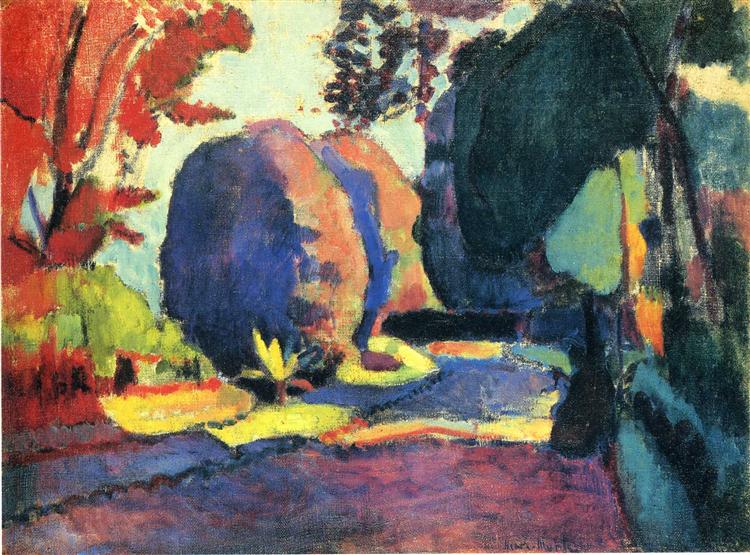Description
The work "The Luxembourg Gardens" by Henri Matisse, created in 1901, stands out as an early manifestation of the artistic genius of the master Frenchman. This painting, through its composition and use of color, offers a window into Matisse's transition from a more traditional handling towards the styles that would define his later career. Framed by the dimensions of 75x56 cm, the work captures a serene and detailed scene of the Luxembourg Gardens in Paris, a place of rest and recreation that has been the subject of many artistic interpretations.
Matisse, at this stage of his career, prioritizes a palette that, although not yet explosively vibrant as in his later Fauvist works, already demonstrates a notable sensitivity for nuances and color combinations. In "The Luxembourg Gardens", one can observe a meticulous use of green tones to represent the lush vegetation of the gardens, contrasted with the subtle tones of the paths and statues, achieving a visual balance that guides the viewer through the composition harmoniously.
The scene, full of detail and life, presents several strategically distributed characters that add dynamism and human context to the landscape. The passersby, some sitting on benches and others walking or standing, are depicted in relaxed postures, naturally integrating into the environment. Their clothing, in soft tones, contrasts with the greens and browns of the landscape, providing points of interest that invite careful observation.
Another distinctive aspect of the work is the representation of the statues, positioned as silent guardians among the foliage and people. These sculptural figures not only provide a sense of history and timelessness to the gardens but also interact with the painting's composition, adding an element of depth and spatial structuring that evidences Matisse's detailed study of perspective and proportion.
The sky, in a grayish-blue tone, acts as a calming backdrop that avoids distracting from the intricate foreground and middle ground that Matisse has elaborated with such attention. This chromatic choice captures the atmosphere of an afternoon perhaps not especially sunny, but quietly warm, creating a cozy and reflective sensation.
"The Luxembourg Gardens" is situated at a crucial moment in Matisse's career, reflecting both his roots in post-impressionism and the early signs of his path towards Fauvism. In this work, one can perceive the influence of masters like Cézanne in the structuring and use of color, as well as a palpable desire to explore beyond the conventions of his time.
The attention to detail and the subtle vibration of everyday life in "The Luxembourg Gardens" are a testament to Matisse's mastery in capturing the essence of a space and its inhabitants. Although not the most well-known work of his vast repertoire, this painting stands out as a fundamental piece to understand the stylistic evolution of the artist and his unparalleled ability to combine color, form, and humanity on a single canvas.

